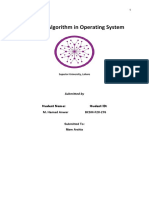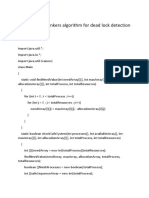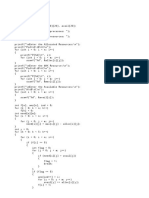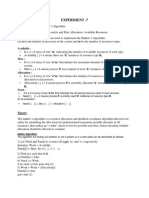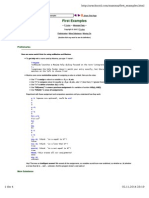0% found this document useful (0 votes)
110 views4 pagesBankers Algorithm
This document describes the Banker's Algorithm for determining if a system is in a safe state. It defines the number of processes and resources, and includes functions to calculate resource needs and check if the system is safe by finding a safe sequence of processes.
Uploaded by
Rashad MahmoodCopyright
© © All Rights Reserved
We take content rights seriously. If you suspect this is your content, claim it here.
Available Formats
Download as TXT, PDF, TXT or read online on Scribd
0% found this document useful (0 votes)
110 views4 pagesBankers Algorithm
This document describes the Banker's Algorithm for determining if a system is in a safe state. It defines the number of processes and resources, and includes functions to calculate resource needs and check if the system is safe by finding a safe sequence of processes.
Uploaded by
Rashad MahmoodCopyright
© © All Rights Reserved
We take content rights seriously. If you suspect this is your content, claim it here.
Available Formats
Download as TXT, PDF, TXT or read online on Scribd
/ 4






























